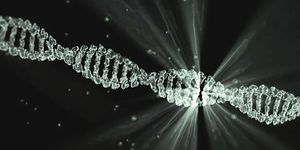Communities of Microbes Can Form 'Memories'
Bacteria can grow in tight clusters called biofilms, which can be found throughout nature. Microbes in these communities can signal to one another, and biofilms can be very difficult to destroy. We've known for years that biofilms are complex and have some of the same properties as multicellular organisms and ecosystems that are more sophisticated than an individual bacterium. Researchers have now found that biofilms have a kind of memory.
Reporting in Cell Systems, a research team in the lab of University of California San Diego Professor Gürol Süel found that when bacterial cells are exposed to light, they will remember that exposure for hours afterward. After the researchers manipulated the process, patterns of memory became evident. This work may help scientists learn how to create computing systems that utilize bacteria, and it could help us learn more about the brain.
"Even just a few years ago people didn't think bacterial cells and neurons were anything alike because they are such different cells," said Süel. "This finding in bacteria provides clues and a chance to understand some key features of the brain in a simpler system. If we understand how something as sophisticated as a neuron came to be -- its ancient roots -- we have a better chance of understanding how and why it works a certain way."
Previous work by the Suel lab has shown that bacterial communication systems can use ion channels to communicate.
In this study, they encoded memory patterns, as seen in the video. Using light, they opened ion channels in the membrane of Bacillus subtilis bacteria. Since ions have a charge, the movement of ions across a membrane creates a net negative charge on one side and a positive charge on the other, called the membrane potential. The researchers used light to induce changes in the membrane potentials of cells in a biofilm. These optical imprints lasted for hours after the stimulus was initially applied, showing that a kind of memory could be formed in microbes.
In the video, the UCSD library logo area is represented by bacteria that have been exposed to light, while the rest of the microbes have not. These two populations respond differently to changes in the concentration of extracellular potassium ions. The pattern remains visible even through cycles of potassium level changes.
"When we perturbed these bacteria with light they remembered and responded differently from that point on," said Süel. "So for the first time, we can directly visualize which cells have the memory. That's something we can't visualize in the human brain."
It may be possible to engineer a kind of bacteria-based computing or synthetic circuit by imprinting spatial memory patterns in biofilms.
"Bacteria are the dominant form of life on this planet," said Süel. "Being able to write memory into a bacterial system and do it in a complex way is one of the first requirements for being able to do computations using bacterial communities."
Sources: AAAS/Eurekalert! via University of California - San Diego, Cell Systems








